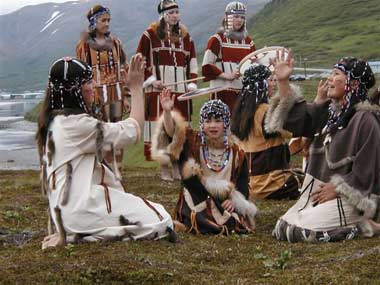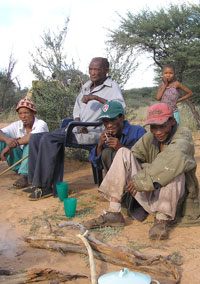I don't know why, but the idea of learning an endangered language is very interesting to me. Something about being part of such an exclusive club, or something about the in-depth culture which is rarely found with larger languages.
I know that a lot of other people are interested in learning an endangered language for various reasons, and so I thought I would find a whole bunch of endangered languages and then point you to the resources with which to learn them.
Aleut.

Aleut is part of the Eskimo-Aleut family, and is native to Alaska (specifically, the Aleutian, Pribilof and Commander Islands).
How many people speak Aleut you ask? A 2007 study estimated that only 100-300 people still speak it in the world today. But, don't worry. Due to a long and consistent fascination in the language (mainly by Russian missionaries), there are a lot of places to go and learn Aleut.
The University of Alaska publishes an Aleut grammar book, a conversational CD set and textbook, dictionary, and stories written in Aleut for the more advanced learner. Due to the low batch numbers they are quite expensive, but you could buy them all for less than the price of Rosetta Stone Spanish.
Paakantyi.

Paakantyi is an Australian aboriginal language spoken around the Darling river. Here's another fun fact. Only 2 people speak it in the world!! If you learnt Paakantyi you would be in an exclusive club of 3 members. You would also be absorbing an important piece of Australian heritage.
I had to look really hard to find anything significant in terms of resources. As you would imagine, there isn't a lot of material about a language with 2 speakers.
I found out that a school in New South Wales wrote a textbook about Paakantyi, and being a small school they would probably be open to sending you a copy if you contacted them.
The Alliance for Linguistic Diversity has an online grammar book, but you need to request permission to view it. There is also a grammar book written by Luise Anna Hercus in 1993. I can't find a copy for sale, but there is a copy in the Australian Institute of Aboriginal and Torres Strait Islander Studies Library and the Wentworth Shire Library.
Taa.

Taa is a language with about 4,200 speakers spread across Namibia and Botswana. Unfortunately, if you google 'Taa' you tend to get results about the Texas Apartment Association.
Luckily this is one language that the Alliance for Linguistic Diversity has quite a few resources for. They have videos showing the pronunciation, videos documenting the language, and documents about vocabulary and grammar (although the documents can be quite confusing).
Yup'ik.

Yup'ik is a another member of the Eskimo-Aleut language family. It is spread into various dialects, the most prominent of which is Central Alaskan Yup'ik. In total they boast about 19,000 speakers. In 17 Alaskan villages children are still brought up with Yup'ik as their first language.
Once again, the University of Alaska has a wide choice of stories and conversational textbooks, mainly for Central Alaskan Yup'ik, but some for the other dialects as well.
No comments:
Post a Comment